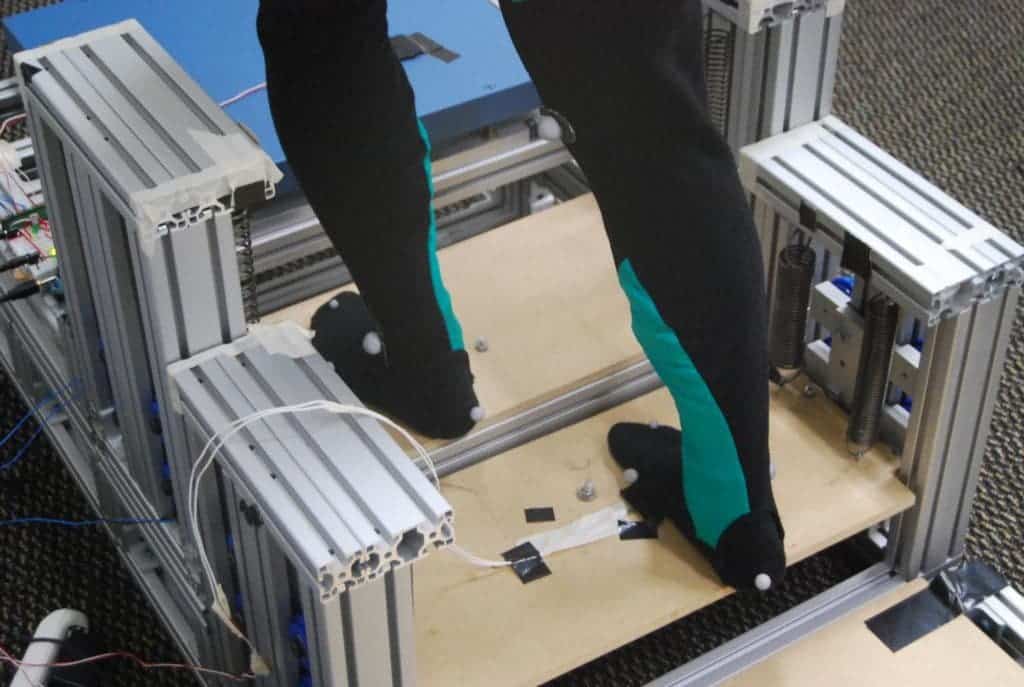
Every time you walk down stairs, the body braces for each step to avoid falling which uses a lot of energy. It’s a lot like pulling the brakes of your car while revving the engine, explains Lena Ting, a professor of biomedical engineering at Emory University and Georgia Tech, who along with colleagues recognized there’s a potential to recover this energy. They recently reported their concept of energy-recycling stairs that store a person’s energy dissipated during descent and return it during ascent.
The researchers got the idea for energy-recovering stairs when they were exploring special prosthetic shoe solutions meant to help people with disabilities climb stairs. They quickly realized that you can make climbing stairs for everyone if the stairs themselves reuse energy.
Climbing stairs is actually very energy efficient since most of the energy your feet employ is transferred into potential energy to lift you up. Descending stairs, however, is wasteful since we have to expend energy simply to keep us from falling.
To harvest all that wasted energy, the researchers built spring-loaded stairs equipped with pressure sensors that compress when someone is descending on the steps. This loads the spring and saves 26 percent of the energy otherwise dissipated by braking forces at the ankle, the team reported in the journal PLOS ONE. When someone ascends the stairs, the stored energy is released by the steps giving people a boost that makes it 37 percent easier on the knee compared to climbing normal stairs. It works pretty well although the researchers themselves were skeptical of any energy savings prior to designing the device.
“Our stairs store that energy rather than wasting it,” Ting said.
It might seem odd to help make climbing stairs easier in an overweight society but these energy-recycling stairs might prove very useful in some people’s homes. One of the mothers of the researchers is 72 years old and often finds it difficult climbing stairs.
“Current solutions for people who need help aren’t very affordable. Elevators and stair-lifts are often impractical to install at home,” said Karen Liu, an associate professor in Georgia Tech’s School of Interactive Computing. “Low-cost, easily installed assistive stairs could be a way to allow people to retain their ability to use stairs and not move out of their homes.”
“Maintaining mobility is very much a use-it-or-lose-it thing. It’s important to keep people walking and independent through injury and aging to maximize quality of life,” said Ting.



